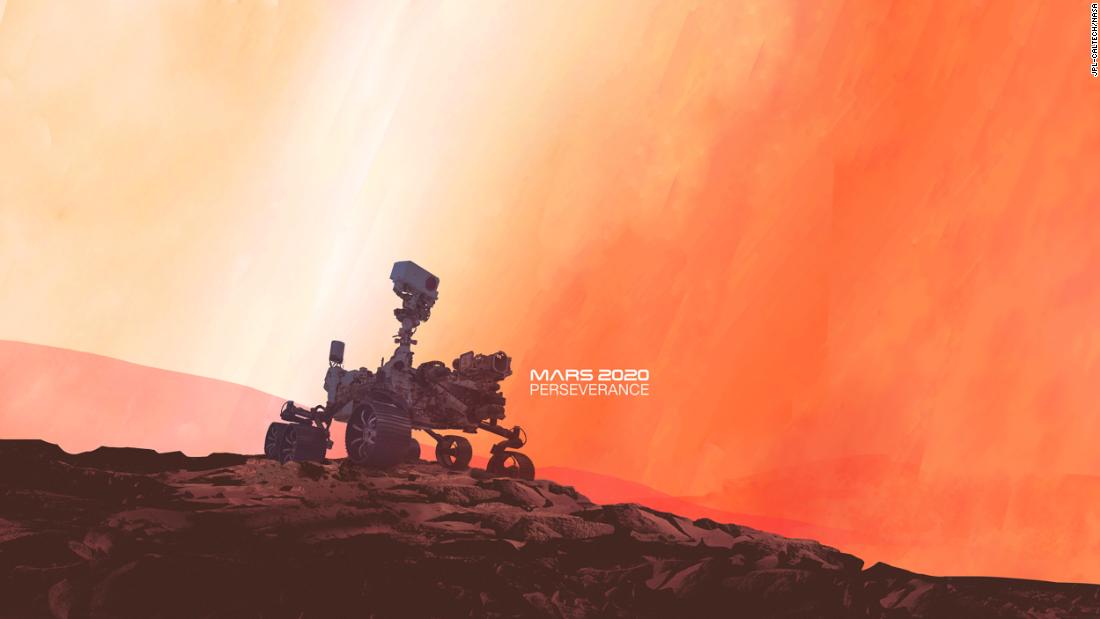While 2020 may have been derailed and some science delayed due to the pandemic, 2021 still promises to be the year of science „which we rarely see,“ according to Thomas Zurbuchen, co-director of NASA’s Science Mission Directorate.
Multiple missions will explore Mars, new telescopes will start observations, and plans are underway to bring humans back to the moon by 2024.
While the pandemic is likely to delay the launch and progress of some missions, others remain on the right track, especially those already in space. Here’s what we can expect in 2021.
Explore Mars in new ways
The three should reach Mars in February.
The Hope Probe will be launched in orbit around Mars, marking the first time the UAE has orbited the red planet. The probe will remain in orbit for one Martian year – equivalent to 687 Earth days – to collect data about the Martian atmosphere.
Tianwen-1, whose name means „searching for the heavenly truth,“ is the first Chinese mission to Mars. The probe will orbit the planet before landing on its surface, hoping to be able to gather important information about Mars‘ soil, geological structure, environment, atmosphere, and water signs.
The Tianwen-1 includes an orbiter, a deployable camera, a landing gear and a rover. Once the probe lands on the surface of Mars, it will extend a ramp that will allow the spacecraft to roll to the surface. The probe can be used to transmit signals from the probe to the ground, and the spacecraft can send messages to Earth on its own.
Once the rover lands, the two-year mission of perseverance begins.
The rover will also find a nice flat surface to drop the Ingenuity helicopter that has a place to use as a test helipad for five potential test flights over a 30-day period. This will happen during the first 50 to 90 Mars days or Mars days of the mission.
Once creativity has settled on the surface, perseverance will lead to safety in the distance and use its cameras to watch and record Ingenuity’s journey.
After these voyages, you will begin to persevere in searching for evidence of ancient life, studying the climate and geology of Mars, and collecting samples that will eventually be returned to Earth via planned future missions.
Exploration of exoplanets
The new target launch date is October 31, 2021. The telescope will be launched from French Guiana. According to the agency, it was scheduled to launch in March 2021, but was delayed due to the epidemic and technical challenges.
The telescope will answer questions about our solar system, study exoplanets in new ways and delve more deeply into the universe than we were able to before.
It comes with a mirror that can extend to 21 feet 4 inches – an enormous length that allows the mirror to collect more light from the objects it is observing once the telescope is in space. The more light a mirror can collect, the more detail the telescope can observe.
The agency said it was the largest mirror NASA had ever built, but its size created a unique problem. The mirror was too large to fit inside a missile. So they designed the telescope as a series of moving parts that could fold in origami style and fit a 16-foot space for launch.
„Webb is designed to build on the incredible legacy of the Hubble and Spitzer space telescopes, by observing the infrared universe and exploring every stage of cosmic history,“ said Eric Smith, NASA Webb scientist at the agency’s headquarters.
„The observatory will detect light from the first generation of galaxies that formed in the early universe after the Big Bang, and study the atmospheres of nearby exoplanets for possible signs of habitability.“
First Light by Vera Rubin
It is the largest digital camera in the world, capable of monitoring a golf ball from a distance of 15 miles while capturing a stunning 3200-megapixel photo.
The observatory’s capabilities will enable it to detect faint objects that are 100 million times fainter than what we see with the naked eye. It is designed to map the Milky Way, explore dark energy and dark matter, and survey the solar system.
During the 10-year survey, the camera is expected to visualize 20 billion galaxies.
Robin, who passed away in 2016, was once a mentor to aspiring astronomers and championed the role of women in science. As one of the most influential astronomers in the world, Robin provided some of the first clues to the existence of dark matter – which comprises a large portion of the universe but cannot be seen -.
The camera is currently being assembled, and the team has estimated that the camera will be ready for testing by mid-2021 before it is sent to Chile for installation.
Artemis: a new space generation
NASA’s Artemis program, which seeks to land the first woman and next man on the moon in 2024, has made great strides in the past year despite the pandemic. The year 2021 is likely to see further progress and milestones for the program.
While Artemis‘ first mission in November 2021 will be a flight test without a crew, Artemis II will be a manned flight of the Moon in August 2023.
These missions will pave the way for Artemis III – when the astronauts return to the surface of the Moon.
NASA’s Polar Exploration Volatile Module, or VIPER, will create the moon’s first water resource maps for future human space exploration once it lands on the moon’s surface in 2022.
Artemis base camp could be established at the south pole of the Moon by the end of the decade.

„Total Social Media Ninja. Introvertiert. Schöpfer. TV-Fan. Preisgekrönter Unternehmer. Web-Nerd. Zertifizierter Leser.“


